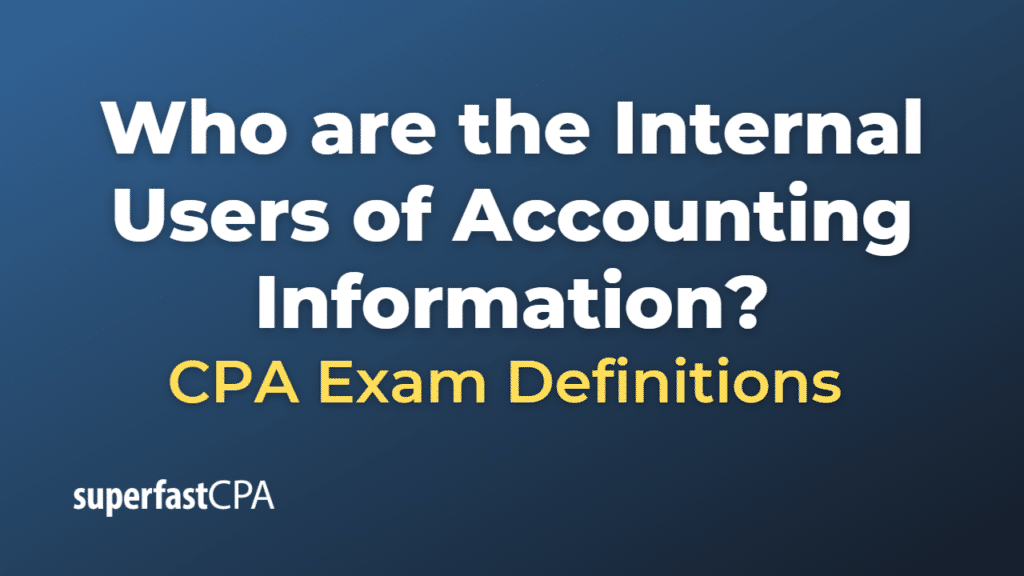Internal Users of Accounting Information
Internal users of accounting information are individuals and groups within an organization who use financial information to make decisions. These internal users typically include:
- Management: Managers at all levels use accounting information to set goals, develop plans, establish budgets, and evaluate future prospects as well as the performance of different divisions and employees.
- Employees: Employees use financial statements to understand the profitability and stability of their employers, which can affect their job security and prospects for raises and promotions.
- Owners: Business owners, whether they are sole proprietors, partners, or shareholders in a corporation, use accounting information to make decisions about their investment in the company and to assess management’s stewardship of their resources.
- Board of Directors: The board of directors, who are elected by shareholders, use accounting information to guide their oversight of the company’s management and performance.
- Internal Auditors: They examine the organization’s internal controls, including its corporate governance and accounting processes. They provide recommendations to improve the company’s risk management and ensure its compliance with laws and regulations.
Each of these groups has specific questions they are trying to answer with the help of accounting information, and they need reliable, relevant, and timely data to make informed decisions. Therefore, the accounting function in an organization plays a crucial role in its effective management and operation.
Example of the Internal Users of Accounting Information
Let’s look at an example involving several internal users of accounting information in a hypothetical manufacturing company.
- Management: The CEO and executive team need to review quarterly financial statements to assess the company’s performance and determine whether they’re on track to meet annual revenue and profit targets. They might also use more detailed accounting reports to understand which products are most profitable, how costs are trending, or how cash flow is being managed.
- Employees: A factory worker in the company may be part of a profit-sharing plan. They use the company’s annual financial statements to understand how the company performed, as this will affect their bonus.
- Owners: The owners of the company review the annual financial statements to assess the return on their investment. They look at the company’s profits, how much is being reinvested in the company, and how much is being distributed to owners as dividends.
- Board of Directors: The board reviews the company’s financial statements before they’re published to ensure that they present a true and fair view of the company’s financial position. They use these statements, along with other accounting information, to oversee the management team and make decisions about company strategy.
- Internal Auditors: The internal audit team conducts an audit of the company’s inventory management process. They use accounting records to verify the amount of inventory on the balance sheet, and they test the controls over inventory to ensure they’re effective.
In each of these scenarios, the internal user is relying on accounting information to make decisions, evaluate performance, and ensure the accuracy and integrity of financial reports.













